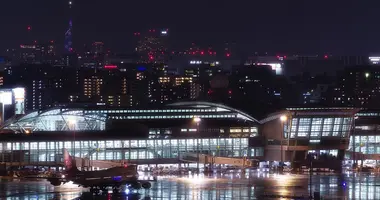Road signs and driving regulations in Japan
- Published on : 04/05/2021
- by : OF
- Youtube
Learn all about road signs and driving rules in Japan before you get behind the wheel!
General rules for driving in Japan
Apart from the fact that cars in Japan are driven on the left-hand side of the road (the steering wheel is on the right), driving in Japan is not particularly difficult, or dangerous, because the roads are well maintained, Japanese road signs are a plenty, and drivers are courteous and careful.
Road signs in Japan, which comply with most international standards, are usually in English as well as Japanese. Only rural areas may be an exception to this rule.
In big cities like Tokyo, some main roads have various lanes to take depending on where you wish to go. As far as possible, it is better to plan in advance which direction you need to take, to avoid having to change lanes at the last minute, which in some cases is forbidden, and is difficult to do when several cars are lined up.
Particular driving rules in Japan
The rules of the road are the same as anywhere else, but occasionally the road signs can be slightly confusing. Here are some examples to help you:
- Places where it is forbidden to turn are often indicated by blue arrows telling you to go straight (instead of the right or left arrow crossed out in red).
- Like in the United States, traffic lights are horizontal and located on the other side of the intersection. Be sure to stop before crossing the intersection, and not when you reach the traffic light. The system of green arrows, indicating that it is possible to turn left or right, is often used. Be careful not to start moving forward just because the light turns green. There could be a red arrow indicating that you must wait before going in the desired direction. The Prefectures of Toyama and Niigata have vertical traffic lights.
- "STOP" signs show a red upside-down triangle where it is written "止まれ".
- Pedestrians have the right of way. At intersections, it is frequent to have to allow pedestrians to cross the road before turning yourself.
- At intersections, cars going straight and those turning left have right of way. Cars turning right must wait. If you are turning right, it is usually best to move to the middle of the intersection (you will see a lane with a white stripe indicating where you need to position the vehicle), and wait for all the on-coming traffic to pass before turning.
Speed limits
Speed limits are between 30 and 50 km/h in urban areas, 60 km/h on the outskirts and other roads, and 100 km/h on most motorways.
Speed is closely monitored in Japan, and you will find a number of fixed radars, as well as mobile ones (inside vehicles). Generally, the Japanese do not tend to put their foot down too much on the accelerator.
Precautions
Japanese drivers are courteous, and do not drive dangerously. But you may come across some surprises depending on the drivers and the area that you are driving in. It is thus important to expect the unexpected, and drive in a calm and collected fashion.
Some drivers have a tendency to stop anywhere while indicating at the last minute. Be prepared for this. Particularly, taxis and delivery vehicles often turn around or reverse.
In many places, the distinction between lanes for vehicles and lanes for pedestrians is unclear (there are no raised pavements, pedestrians walk along the side of the road). You must thus be very careful and watch for bikes and pedestrians as they share the road with motorized vehicles.
The road, for cars, is the setting for many incidents for which you should be prepared, especially in big cities: cars parked on the side of the road and blocking the traffic, bikes that shoot out or simply ride in the wrong direction, trucks offloading their contents, and delivery company employees walking in the road with their trolleys.
If a car has a sticker stuck to the back showing a yellow and orange leaf, it means an elderly person is driving.










